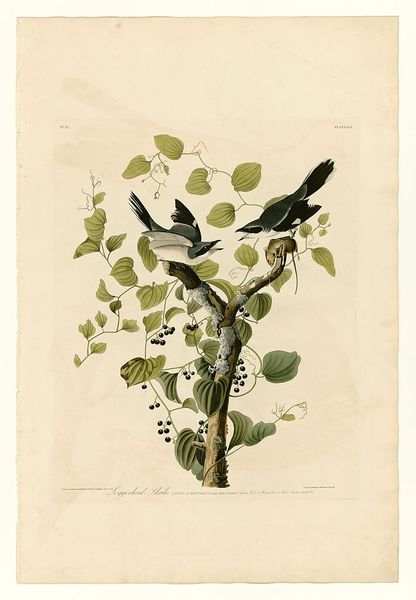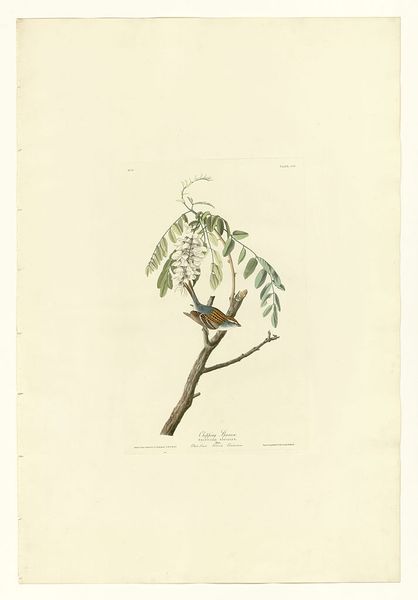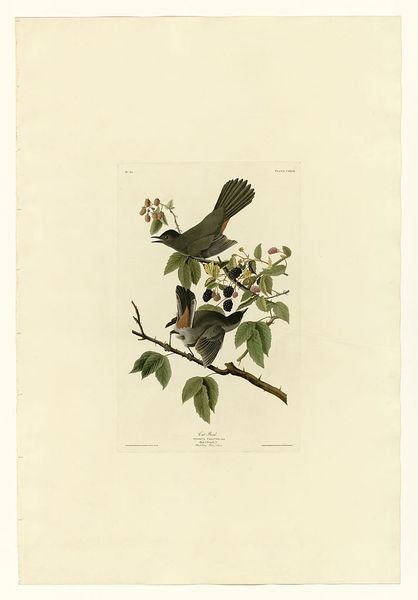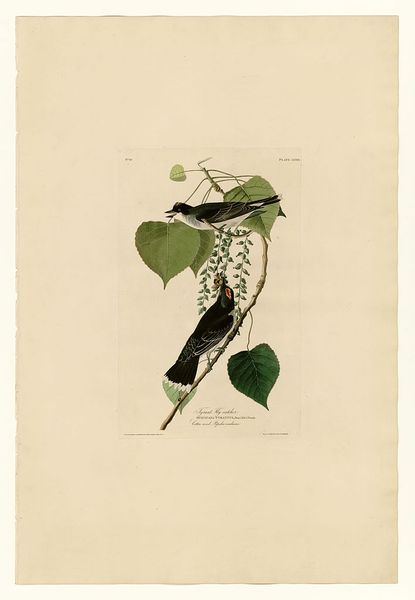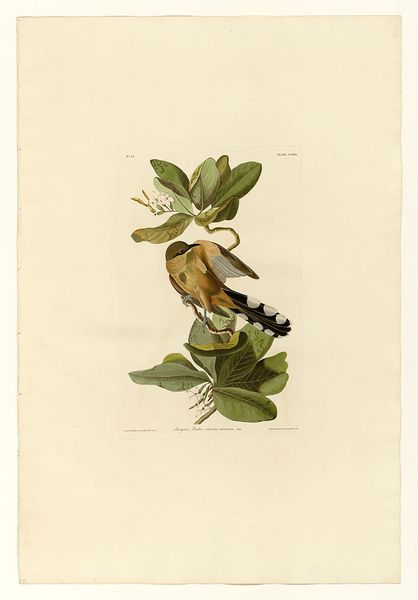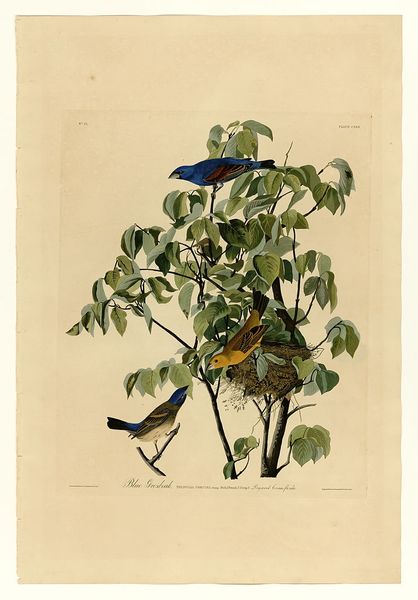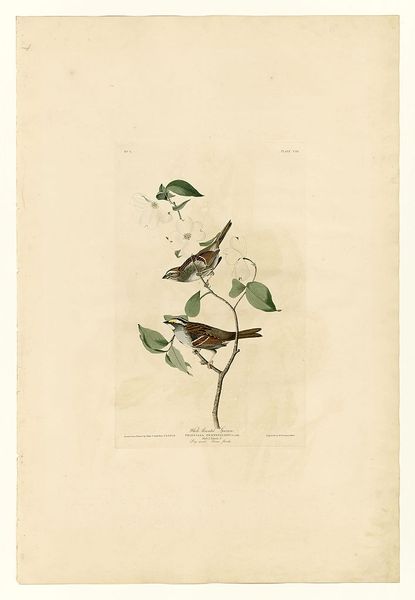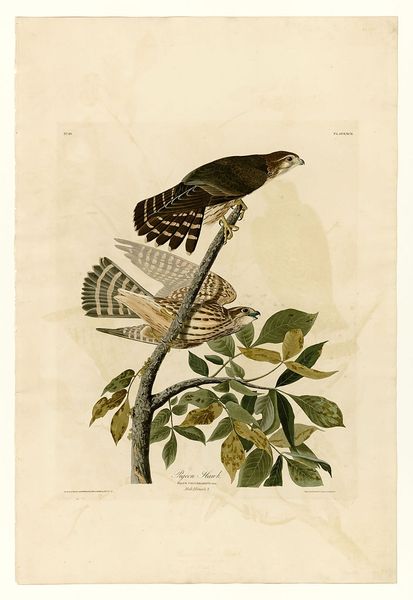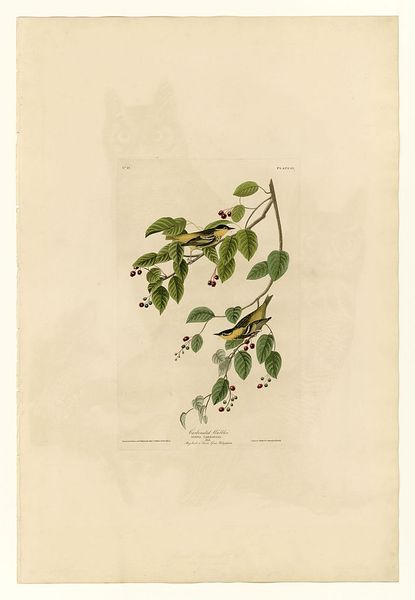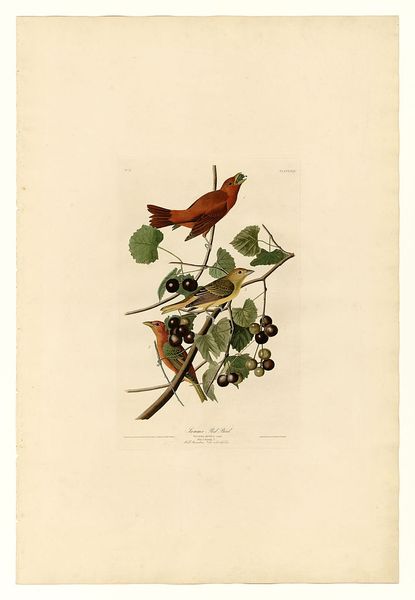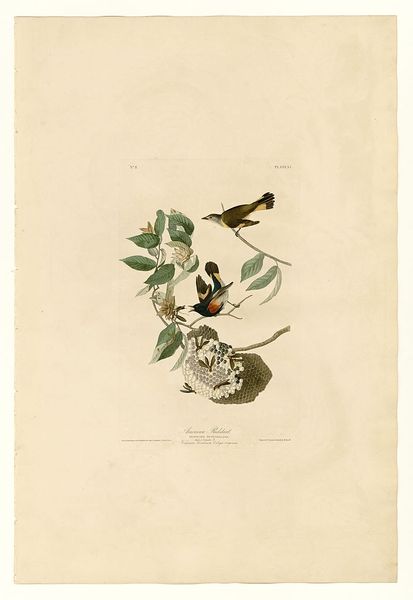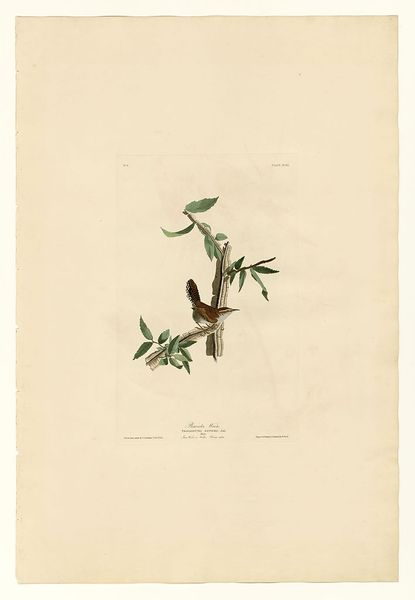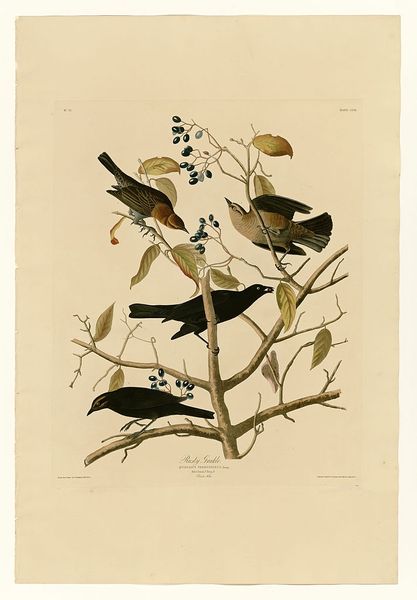
drawing, watercolor
#
portrait
#
tree
#
naturalistic theme
#
drawing
#
landscape
#
watercolor
#
plant
#
romanticism
#
watercolour illustration
#
naturalism
#
botanical art
Copyright: Public domain
Editor: We’re looking at John James Audubon's watercolor and drawing, “Plate 132 Three-toed Woodpecker.” It gives me the impression of a detailed page from a naturalist's notebook. What do you see in this piece? Curator: What strikes me is how Audubon transforms objective observation into a layered visual language. He’s not just showing us the woodpecker; he’s presenting an entire world. Consider the positioning of the birds—three separate, but related, instances on a singular vertical plane of the tree. It's as if we are presented with multiple iterations of the same animal, as if moving through time itself. Editor: Time itself? That's interesting! Could you say more about that? Curator: Yes. Notice how the leaves droop? It's not just about accurately rendering foliage. The wilting signifies mortality, the fleeting nature of life, connecting back to Vanitas traditions. Furthermore, there’s the question of where they sit on this branch: Woodpeckers drill for sustenance; they burrow into decay to unearth something of vital essence. They are the surgeons of trees. Do you agree? Editor: I do, now that you mention it. They're almost guardians, or symbols of change. Curator: Exactly! Their symbolism echoes through folklore. They appear across cultures in which people once maintained far closer proximity to, and thus a far better understanding of, the natural world. Can you think of any reason as to why? Editor: Well... the natural world sustains us all? Perhaps these images sustain us too, by reminding us of our place within nature’s patterns and rhythms. Thank you for that, it makes the picture much more alive for me. Curator: And for me too; our reading informs the image, imbuing the picture with contemporary perspectives.
Comments
No comments
Be the first to comment and join the conversation on the ultimate creative platform.
